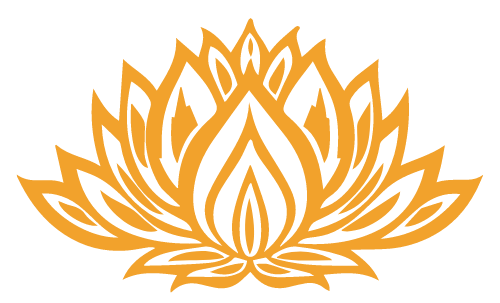DEATHWALKER'S GUIDE TO LIFE
EPISODE 3
Finding the words for tender conversations
Pictured above: 'Day of the Dead' tea set
OCTOBER 17, 2021
EPISODE 3
Finding the words for tender conversations
Death in Print: Listen: Finding the Words for Tender Conversations by Kathryn Mannix, Meet: Author Kathryn Mannix, Death on Screen: 'Phone of the Wind'
Listen to Episode 3 on the following podcast platforms
Or, if you've already listened to the show, scroll down for more info and links . . .
DEATH IN PRINT
Listen by Kathryn Mannix




Dr Kathryn Mannix’s first book, With the End in Mind, was published in 2018 and became a Sunday Times bestseller. Her follow up book, Listen: How To Find The Words For Tender Conversations, is – as the title suggests – a book about conversations that matter and how to have them better: more honestly, more confidently and without regret.
By bringing together stories drawn from a lifetime’s experience working in medicine and informed by the latest psychology, Mannix offers lessons for how we can better speak our mind and help when others need to.
While this book doesn't just deal with conversations about death – Mannix also shares stories about a child coming out to their parent, a friend noticing the first signs of someone’s dementia and a careers advisor and a teenager with radically different perspectives – she more than adequately deals with what is one of the biggest taboos.
She deals with the consequences of the pandemic: how social isolation has impacted on our mental health; how it restricts family and friends from being with their loved ones when they're dying of Covid-19 and collectively mourning their death; as well as the impact it's had on hospital and medical staff. While she doesn't directly tackle what is probably one of the most difficult conversations many of us may face these days, when we're talking to whānau or friends who might have different beliefs about the severity of Covid and vaccination, the fundamental skills you need to start this trickiest of tricky conversations are all illuminated in Listen.
Listen is an accessible read and gives lots of practical examples, through others’ stories, of new ways to connect and communicate.
Listen: How To Find The Words For Tender Conversations was published in September 2021 by HarperCollins in NZ, Australia, and the UK.
By bringing together stories drawn from a lifetime’s experience working in medicine and informed by the latest psychology, Mannix offers lessons for how we can better speak our mind and help when others need to.
While this book doesn't just deal with conversations about death – Mannix also shares stories about a child coming out to their parent, a friend noticing the first signs of someone’s dementia and a careers advisor and a teenager with radically different perspectives – she more than adequately deals with what is one of the biggest taboos.
She deals with the consequences of the pandemic: how social isolation has impacted on our mental health; how it restricts family and friends from being with their loved ones when they're dying of Covid-19 and collectively mourning their death; as well as the impact it's had on hospital and medical staff. While she doesn't directly tackle what is probably one of the most difficult conversations many of us may face these days, when we're talking to whānau or friends who might have different beliefs about the severity of Covid and vaccination, the fundamental skills you need to start this trickiest of tricky conversations are all illuminated in Listen.
Listen is an accessible read and gives lots of practical examples, through others’ stories, of new ways to connect and communicate.
Listen: How To Find The Words For Tender Conversations was published in September 2021 by HarperCollins in NZ, Australia, and the UK.
KŌRERO / CONVERSATION
Meet Kathryn Mannix

Kathryn Mannix has spent her medical career working with people who have incurable, advanced illnesses. Starting in cancer care and changing career to become a pioneer of the new discipline of palliative medicine, she has worked in teams in hospices, hospitals and in patients’ own homes to deliver palliative care, optimising quality of life even as death is approaching. Having qualified as a Cognitive Behaviour Therapist in 1993, she started the UK’s (possibly the world’s) first CBT clinic exclusively for palliative care patients, and devised ‘CBT First Aid’ training to enable palliative care colleagues to add new skills to their repertoire for helping patients.
Kathryn has worked with many thousands of dying people, and has found their ability to deal with illness and death both fascinating and inspirational. She believes that a better public awareness about what happens as we die would reduce fear and enable people to discuss their hopes and plans with the people who matter to them.
Her account of how people live while they are dying, With the End in Mind, was published to universal acclaim and was shortlisted for the Wellcome Prize.
Kathryn’s new book, Listen: How to Find the Words for Tender Conversations, was published in September 2021 by HarperCollins in Australia and Aotearoa New Zealand, and by William Collins in the UK.
Kathryn nominated 'Dido's Lament' by Henry Purcell as a song she would like played at her funeral or wake. Listen to the song in our 'Farewell songs' playlist.
Kathryn has worked with many thousands of dying people, and has found their ability to deal with illness and death both fascinating and inspirational. She believes that a better public awareness about what happens as we die would reduce fear and enable people to discuss their hopes and plans with the people who matter to them.
Her account of how people live while they are dying, With the End in Mind, was published to universal acclaim and was shortlisted for the Wellcome Prize.
Kathryn’s new book, Listen: How to Find the Words for Tender Conversations, was published in September 2021 by HarperCollins in Australia and Aotearoa New Zealand, and by William Collins in the UK.
Kathryn nominated 'Dido's Lament' by Henry Purcell as a song she would like played at her funeral or wake. Listen to the song in our 'Farewell songs' playlist.
Dying isn't as bad as you think
FOR MORE INFORMATION ABOUT KATHRYN MANNIX
Find out more about Listen here.
Follow Kathryn Mannix on Facebook.
Find out more about Listen here.
Follow Kathryn Mannix on Facebook.
DEATH ON SCREEN
'Phone of the Wind'
In Episode 3 of Deathwalker's Guide to Life, we travel through cyberspace to a small village called Ōtsuchi on the northeastern coast of Japan. When we arrive, I invite listeners to imagine a white phone booth perched on a hill.
In the booth, on a small bench, you'll find a black rotary dial phone, one of those old-fashioned phones you dial with one finger. Beside the phone, there is a notebook and pen and some fresh flowers. (Oh, and some hand sanitiser . . .)
In this phone booth, you’re invited to call your deceased loved ones. You don't need to be plugged into the telecoms network to have a one-way conversation with the dead. It's an opportunity to be connected despite disconnection.
This phone booth is called 'Kaze no Denwa' in Japanese, which loosely means 'wind phone' in English although it has also been bestowed the more poetic name, 'Phone of the Wind'.
The wind phone is the brainchild of a landscape gardener called Itarua Sasaki, who set it up after his beloved cousin died of cancer. Sasaki created it so he could feel connected with his cousin after his death but it soon began to provide solace to those in the surrounding region, whose loved ones died in the 2011 Tōhoku earthquake and tsunami, which killed 10 per cent of the local population. Then people who had been impacted in the resulting Fukushima disaster started coming. And then international tourists and travellers.
I first heard about the wind phone when I was participating in Tessa Fontaine's Art of Death, one of Atlas Obscura’s online experiences.
If you haven't yet discovered the treasure trove that is Atlas Obscura, check it out (see the link below). The online magazine publishes stories about hidden places, incredible history, scientific marvels, and gastronomical wonders. Its mission is to inspire wonder and curiosity about the incredible world we all share. It's also a global community of explorers, who have together created a comprehensive database of the world’s most extraordinary places and foods.
In the five-part 'Art of Death' course, we explored notions of death and dying around the world, drawing from biology, history, and beyond. When I participated, back in February and March this year, I was the only participant based in the Southern Hemisphere.
As well as running online course for death nerds like me, Fontaine is the author of The Electric Woman: A Memoir in Death-Defying Acts.
In 2018, she wrote an essay called ‘The Phone of the Wind: A pilgrimage to a disconnected phone in Ōtuschi Japan’, which was published in The Believer, a Nevada-based online magazine.
When Fontaine asked Mr. Sasaki why he chose a rotary phone for his phone booth, he told her that 'the extra time it takes to dial is good. Gives you a chance to figure out what to say to the dead.'
In her essay, Fontaine reports that most locals come after dark, or very early in the morning. They keep their grief private. If Mr. Sasaki sees someone out in his yard, on the phone, he pretends not to notice.
'Death doesn’t end life,' Mr. Sasaki told her. 'One person dies, and all the others around them go on living.'
As well as attracting visitors from around the world the ‘Phone of the Wind’ has spawned several replicas (near Dublin, Ireland and in Oakland, California as well as another Japanese prefecture). And, according to Wikipedia, a wind phone was built on Aspen Mountain in Colorado earlier this year. According to the artist, who remains anonymous because shrines are forbidden in United States’ national forests, the wind phone was constructed as an outlet for people mourning deaths caused by the COVID-19 pandemic.
The wind phone has also resulted in several works of literature and film.
In 2017, Sasaki, the creator of the Ōtsuchi wind phone, wrote a book of reflections titled Kaze no Denwa – Daishinsai Kara Rokunen, Kaze no Denwa o Tooshite Mieru Koto (in English, The Phone of the Wind: What I Have Seen via the Phone in the Six Years Since the Earthquake).
After Italian writer Laura Imai Messina's visited the Ōtsuchi wind phone in 2011, she wrote a novel called The Phone Box at the Edge of the World which was published in 2020 and tells the story of a woman who loses her family in the Tōhoku tsunami and travels to the wind phone, where she meets a widower and his daughter who have experienced similar losses.
Canadian writer Heather Smith wrote a novel titled The Phone Booth in Mr. Hirota's Garden, which was also published in 2020. Smith fictionalises the origins of wind phone, but fully acknowledges that Sasaki’s wind phone inspired her. She first heard about it on a National Public Radio podcast and then exchanged emails with Sasaki during the writing process, saying that it "was a thrill to receive his blessing and an honour to share his beautiful approach to grief through this book."
There have been at least two films made about the wind phone, include an Austrian short film and a Japanese feature.
There are several news stories about the 'wind phone' on You Tube, including a March 2021 report by Reuters. You can watch this video and find links to the books and articles below.
In the booth, on a small bench, you'll find a black rotary dial phone, one of those old-fashioned phones you dial with one finger. Beside the phone, there is a notebook and pen and some fresh flowers. (Oh, and some hand sanitiser . . .)
In this phone booth, you’re invited to call your deceased loved ones. You don't need to be plugged into the telecoms network to have a one-way conversation with the dead. It's an opportunity to be connected despite disconnection.
This phone booth is called 'Kaze no Denwa' in Japanese, which loosely means 'wind phone' in English although it has also been bestowed the more poetic name, 'Phone of the Wind'.
The wind phone is the brainchild of a landscape gardener called Itarua Sasaki, who set it up after his beloved cousin died of cancer. Sasaki created it so he could feel connected with his cousin after his death but it soon began to provide solace to those in the surrounding region, whose loved ones died in the 2011 Tōhoku earthquake and tsunami, which killed 10 per cent of the local population. Then people who had been impacted in the resulting Fukushima disaster started coming. And then international tourists and travellers.
I first heard about the wind phone when I was participating in Tessa Fontaine's Art of Death, one of Atlas Obscura’s online experiences.
If you haven't yet discovered the treasure trove that is Atlas Obscura, check it out (see the link below). The online magazine publishes stories about hidden places, incredible history, scientific marvels, and gastronomical wonders. Its mission is to inspire wonder and curiosity about the incredible world we all share. It's also a global community of explorers, who have together created a comprehensive database of the world’s most extraordinary places and foods.
In the five-part 'Art of Death' course, we explored notions of death and dying around the world, drawing from biology, history, and beyond. When I participated, back in February and March this year, I was the only participant based in the Southern Hemisphere.
As well as running online course for death nerds like me, Fontaine is the author of The Electric Woman: A Memoir in Death-Defying Acts.
In 2018, she wrote an essay called ‘The Phone of the Wind: A pilgrimage to a disconnected phone in Ōtuschi Japan’, which was published in The Believer, a Nevada-based online magazine.
When Fontaine asked Mr. Sasaki why he chose a rotary phone for his phone booth, he told her that 'the extra time it takes to dial is good. Gives you a chance to figure out what to say to the dead.'
In her essay, Fontaine reports that most locals come after dark, or very early in the morning. They keep their grief private. If Mr. Sasaki sees someone out in his yard, on the phone, he pretends not to notice.
'Death doesn’t end life,' Mr. Sasaki told her. 'One person dies, and all the others around them go on living.'
As well as attracting visitors from around the world the ‘Phone of the Wind’ has spawned several replicas (near Dublin, Ireland and in Oakland, California as well as another Japanese prefecture). And, according to Wikipedia, a wind phone was built on Aspen Mountain in Colorado earlier this year. According to the artist, who remains anonymous because shrines are forbidden in United States’ national forests, the wind phone was constructed as an outlet for people mourning deaths caused by the COVID-19 pandemic.
The wind phone has also resulted in several works of literature and film.
In 2017, Sasaki, the creator of the Ōtsuchi wind phone, wrote a book of reflections titled Kaze no Denwa – Daishinsai Kara Rokunen, Kaze no Denwa o Tooshite Mieru Koto (in English, The Phone of the Wind: What I Have Seen via the Phone in the Six Years Since the Earthquake).
After Italian writer Laura Imai Messina's visited the Ōtsuchi wind phone in 2011, she wrote a novel called The Phone Box at the Edge of the World which was published in 2020 and tells the story of a woman who loses her family in the Tōhoku tsunami and travels to the wind phone, where she meets a widower and his daughter who have experienced similar losses.
Canadian writer Heather Smith wrote a novel titled The Phone Booth in Mr. Hirota's Garden, which was also published in 2020. Smith fictionalises the origins of wind phone, but fully acknowledges that Sasaki’s wind phone inspired her. She first heard about it on a National Public Radio podcast and then exchanged emails with Sasaki during the writing process, saying that it "was a thrill to receive his blessing and an honour to share his beautiful approach to grief through this book."
There have been at least two films made about the wind phone, include an Austrian short film and a Japanese feature.
There are several news stories about the 'wind phone' on You Tube, including a March 2021 report by Reuters. You can watch this video and find links to the books and articles below.
FOR MORE INFORMATION ABOUT 'THE PHONE OF THE WIND'
Read Tessa Fontaine's article here.
Find out more about the 'Art of Death' online course here.
Find out more about the 'Phone of the Wind' on Wikipedia.
Read Tessa Fontaine's article here.
Find out more about the 'Art of Death' online course here.
Find out more about the 'Phone of the Wind' on Wikipedia.
Other Season 1 episodes
OUT OCTOBER 31, 2021
EPISODE 4
Death in Print: No Pressure, No Diamonds by Teri Dillon, Meet: legal executive Marie Austin, Death on Screen: 'I Told You I Was Ill: The Life and Legacy of Spike Milligan'
OUT NOVEMBER 14, 2021
EPISODE 5
Death in Print: H is for Hawk by Helen Macdonald, Meet: poet & playwright Donna McLeod, Death on Screen: 'Living with Ghosts'
OUT NOVEMBER 28, 2021
EPISODE 6
Death in Print: Mortals: How the fear of death shaped human society by Rachel & Ross Menzies, Meet: psychologist and author Rachel Menzies, Death on Screen: Lisel Mueller on 'The Marginalian'







